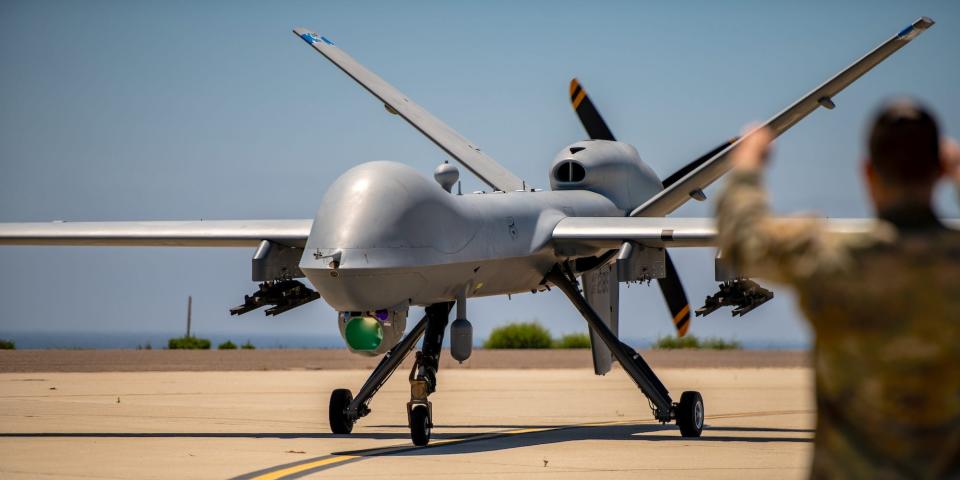Top US general predicts that much of the world's armies, navies, and air forces 'will be robotic' in 15 years, if not sooner

The top US general says technology is changing the ways that wars are being fought.
He said that robots will play a huge role in the world's armies, navies, and air forces within the next decade or so.
Gen. Mark Milley also highlighted the role of artificial intelligence as a military application.
Technology is changing the ways that war is being fought, and the top US general predicts this will lead to an increasing use of robots in armies, navies, and air forces.
Chairman of the Joint Chiefs of Staff Gen. Mark Milley told the Eurasia Group Foundation on a podcast that the world is undergoing a "fundamental change" in the "character of war." Unlike the "nature of war," which Milley described to mean human dynamics and intra-country relationships, he clarified that the character of the war incorporates items like tactics, weapons, technologies, organizations, and management.
"Character of war changes frequently. It changes every time you have a new weapon and so on," Milley said in the podcast, which aired Tuesday. "But fundamentally, it only changes once in a while. Today we are undergoing the most significant and most fundamental change in the character of war. And it's really, this time, being driven by technology."
He pointed out that sensing capabilities have changed the way militaries strike, arguing that the "ability to hit with precision munitions is unlike anything humans have ever witnessed before."
America's highest-ranking military officer specifically emphasized the role of robots and said that the US and many of the world's advanced militaries have been experimenting with uncrewed ships and tanks. Within the next 15 years, if not sooner, Milley said, "you're going to see significant portions of armies and navies and air forces that will be robotic."
Some examples of robotic or unmanned systems already exist within the US military, such as drones, but more systems are in the works. The Army and its defense industry partners have been looking at robotic ground combat vehicles, and Navy officials said last year that US warships may soon be deployed alongside autonomous vessels and other aircraft. And more recently, Air Force leadership suggested it wants as many as 1,000 drone wingmen.
Beyond emerging robotics capabilities, Milley highlighted the potential effects of artificial intelligence as a military application. He said AI has the capability to digest a massive amount of information about its user's military and that of an adversary, which could help give forces an edge when it comes to making decisions in battle.
"Decision-making in war is fundamental to outcomes," Milley said. "The more rapidly you are able to assimilate and absorb large amounts of information and then determine that relative to your opponent, then you're going to have a decisive advantage."
The US military in recent years has been researching how to incorporate AI into various weapons, and the Department of Defense has seen progress among these capabilities. Just last month, the Air Force announced that it successfully let AI pilot a fighter jet, building off past testing involving simulated dogfights.
"All of those technologies are converging all at the same time, and they're all coming to fruition here in the next 10 or 15 years.," Milley said.
Read the original article on Business Insider

